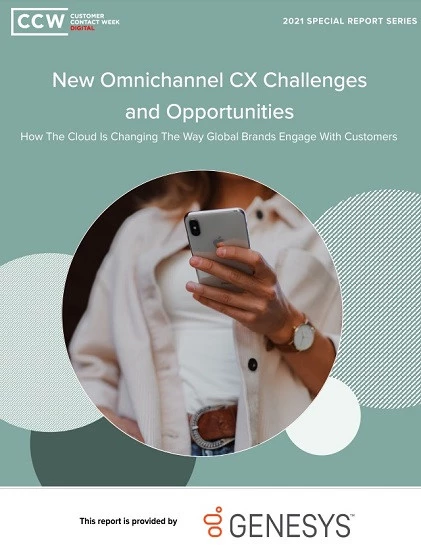Study: Here's Why the Voice Channel Is Still Your Most Important Outreach Tool
Add bookmarkAny CX professional knows the customer journey doesn’t end with a purchase. The key to optimizing customer lifetime value is maintaining an ongoing relationship with the customer beyond peppering their inbox with generic e-blasts.
Offering asynchronous messaging through web chat and mobile messaging, content creation, surveys, hosting events and reaching out with personalized offers are some ways businesses keep their customers engaged and their brand top-of-mind the next time the customer’s on the hunt for a garden hoe/hotel stay/four-year college for their firstborn.
Which brings to mind a common question: when is it appropriate to use the phone? When customers are dealing with a service issue and need troubleshooting. When you need to gather information from a client in order to be able to do something for them, and when conveying negative or sensitive information.
In fact, a survey by cloud communications provider Voxbone shows that 60 percent of respondents prefer brands contact them by phone rather than SMS. Counterintuitively, Millennials and Gen-Zers prefer the phone channel at 3.9 times the rate of Generation X.
The findings also show that 18.3 percent of consumers are likely to reply to a sales-related SMS, but text messaging should not be the initial engagement channel for a cold sales pitch. Businesses should only engage with customers over SMS if there is a prior relationship.
“We saw that if a call was placed first, a follow-up SMS is two and a half times more likely to be engaged with than if you just sent the SMS directly,” Matt Brown, VP of product at Voxbone, told CCW Digital.
When using the voice channel to get in touch, it’s also important to know that customers are 34 percent more likely to pick up the phone and be receptive to doing business with companies calling from a local number, because geographical proximity begets some level of presumed trust.
Read more: CCW Market Study - Contact Center Success in the Automation Age
“If I’m in a 212 area code and I receive a call from a 212 area code, I’m more likely to engage with it,” says Brown. “Ultimately, it’s about community and positioning yourself as part of that community because there’s inherent trust linked with that area code association.”
Given their expectations that brands reduce barriers for customers to get in touch and that they engage with an authentic voice, Millennials, who are poised to represent 30 percent of retail sales, were found to be twice as likely to answer calls as Gen-Xers.
“We think it’s just simply because they view the messaging platform as a far less personal approach to interacting with brands, whereas a phone call gives them a the chance to build a relationship,” explains Brown, who took Voxbone from a wholesale VoIP carrier to a direct-to-enterprise company.
Once a relationship has been established, Brown says there are three golden rules to effectively communicating with customers via SMS.
- The customer has to give their consent to be engaged with via SMS
- Your offering has to be personally relevant to the customer
- Timeliness of the engagement since the last touchpoint with the customer and timeliness of the offer are of the essence
“If I’m trying to have a conversation with you and any of those three rules are violated, the conversation ends immediately,” says Brown.
The study, which culled responses from 1,071 participants across the US, also found that channel preference varies by region. For instance, 84.3 percent of those in the West coast prefer to be engaged with via SMS, while New Englanders are 71 percent more likely to prefer phone calls.













